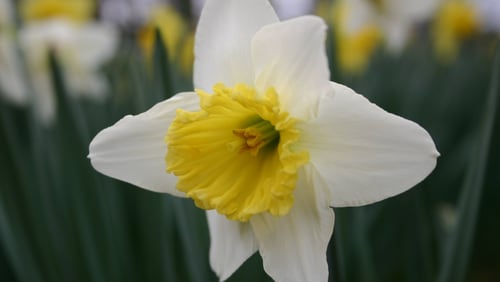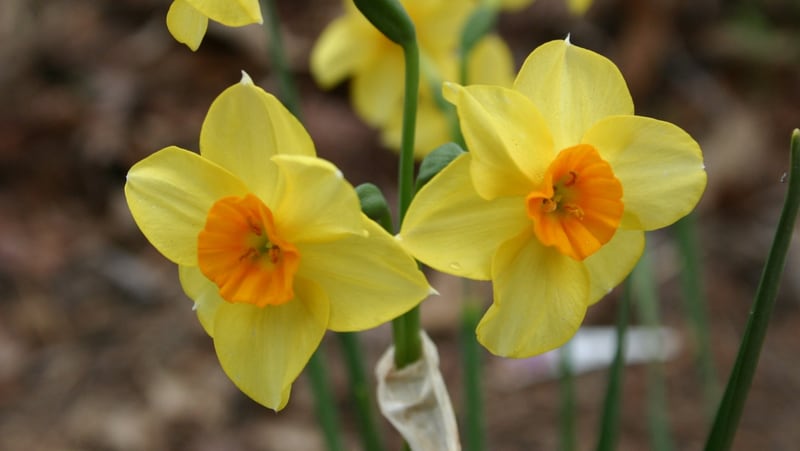Q: I have a daffodil plot, but over the years it has been taken over by grass and weeds. Would it be best to dig everything up, spray, and put down fabric? Debbie Johnson, email
A: I think your best option is to wait a few weeks until the daffodil foliage has begun to turn yellow. Then you can dig everything up and separate the daffodil bulbs from the weeds. Set the bulbs aside in a cool place while you hand-pull weeds or spray with glyphosate (such as Roundup® for example). Wait a few weeks and deal with new weeds similarly. Replant the bulbs, then install some pretty summer annuals, like petunias or Mexican heather for color. Don't use fabric weed cover. A layer of pine chip mulch is better.
RELATED: Floral magnificence: 7 of the South's great public gardens
Q: What is the downside of using diatomaceous earth to control whiteflies on gardenias? Thomas Palmer, email
A: It probably won't control whiteflies on your gardenia. Whiteflies live underneath plant leaves, and it's extremely difficult to get this insecticidal powder under the leaves of your shrubs. If you can figure out a way to spray under the leaves, commercial insecticidal soap—not homemade—will control whiteflies if you are persistent. Otherwise, imidacloprid (Bonide® Systemic Granules, Bayer® Tree and Shrub, etc.) works well. Use it after your shrub blooms to avoid honeybee damage.
Q: I have a small zoysia grass bed I use as a source of plugs for replacing my fescue. I want to put out pre-emergent to cut down on goosegrass and crabgrass in the lawn, but the label of prodiamine and Dimension® products say the chemicals inhibit root development. Will this affect the already slow-establishing zoysia? Bryan Garber, email
A: This is exactly why reading product labels is important. You are correct that pre-emergent chemicals might inhibit rooting of the zoysia plugs. Zoysia grass spreads slowly, so you don't want to inhibit it with anything. One option is to mow the area you're plugging frequently at a 2-inch height. This will inhibit the fescue but allow the zoysia to spread easily. If you are careful you can spot spray clumps of crabgrass or goosegrass using glyphosate (Roundup®, etc.) to kill them and further cut down on competition.
VIDEO: More gardening tips
Q: I have a colony of mining bees under some shrubs. These bees are always on the move, hovering over the soil and under the shrubbery. Should I get them exterminated? I do not want to hamper the pollination of plants in the area, but I do not want to get stung either. John Gladney, Winder
A: Don't kill the bees! Mining bees are considered a beneficial nuisance, like caterpillar-consuming yellowjackets. But unlike yellowjackets, mining bees perform great feats of pollination. The ones you see are mostly stingless male bees. The females fly quickly in and out of their soil tube homes, bringing in pollen to deposit with their eggs. They ignore intruders. Mining bee lives are short. The adults are usually all gone by late April. Leave them alone (or stand nearby) and marvel at their industry. There are more than 500 native bee species in Georgia. The Georgia Native Bee Biodiversity Assessment Project maintains a terrific website devoted to their identification at native-bees-of-georgia.ggc.edu.







